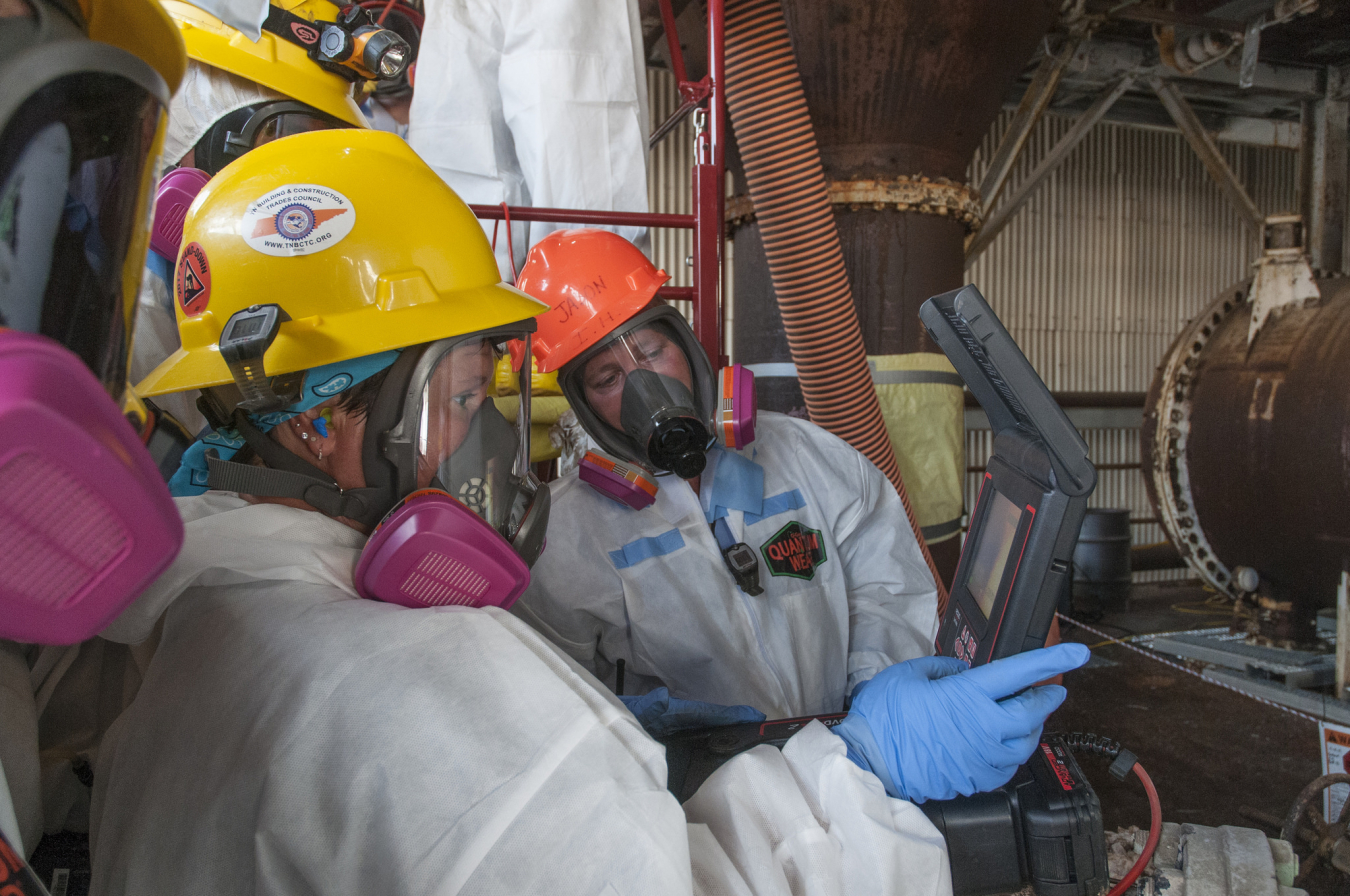
Crews inspect the old COLEX equipment located outside Alpha 4 at the Y-12 Security Complex.
The following appeared as a special to the Oak Ridger
Oak Ridge, Tenn. – The Department of Energy’s Oak Ridge Office of Environmental Management (OREM) posted another strong year in 2017—pushing forward on efforts that are helping remove barriers to economic development and enabling the agency’s important contributions to the nation.
Last year, OREM’s budget climbed to nearly $500 million, its highest level in almost a decade. In return, the cleanup program continued the transformation of a former uranium enrichment complex into a reusable private sector industrial park, reduced the site’s waste inventory, eliminated risks and stabilized some of Oak Ridge’s highest risk facilities, and began preparing for the next major phase of cleanup at the Y-12 National Security Complex.
A strong team of federal, contractor, and union workers are aiming to complete major cleanup at the East Tennessee Technology Park (ETTP), formerly known as the K-25 site, by 2020. This work is transforming the site into an attractive, community-owned asset. Hundreds of acres were transferred from government ownership last year and hundreds more are ready.
Companies are seeing significant signs of potential at the site, and they are investing in its future. LeMond Composites recently located in the area with plans to begin carbon fiber production this year. Locally-owned MCLinc is renewing their commitment with the construction of a new 30,000 square foot laboratory facility. Additionally, UniTech Services Group funded the refurbishment of ETTP’s barge area to receive and transport shipments using local river systems, adding to the site’s existing offerings and infrastructure.
Work is also underway to construct a history center adjacent to the Manhattan Project National Historical Park at the former K-25 site. When the facility opens in 2019, it will share the site’s Manhattan Project and Cold War achievements to visitors from across the globe.
Most of OREM’s projects occur at facilities most residents never see, but the impact is real and beneficial. The program is steadily removing risks and stabilizing some of the 185 excess, contaminated, and deteriorating buildings that are not scheduled for near-term demolition at the Y-12 National Security Complex and Oak Ridge National Laboratory.
In 2017, crews completed characterization, asbestos removal, and mercury extraction from several high risk buildings at both sites. These projects are helping enhance safety and prevent the facilities from deteriorating as rapidly— lowering future cleanup costs, preventing the spread of contamination, and helping create safer environments for future crews.
The program is also actively reducing Oak Ridge’s inventory of contaminated waste. OREM resumed shipments of treated transuranic waste to the Waste Isolation Pilot Plant in New Mexico for the first time in five years, and the program also completed the removal of approximately half of the Uranium-233 inventory that was stored at the Oak Ridge National Laboratory.
Finally, OREM continued laying the foundation for large-scale cleanup to transition from ETTP to the Y-12 National Security Complex. Last year’s biggest development toward this goal was the groundbreaking for a new Mercury Treatment Facility at Y-12.
When constructed, the facility provides a mechanism to limit and control potential mercury releases, which opens the door for safe and effective demolition of Y-12’s largest Manhattan Project-era mercury-contaminated facilities and subsequent soil remediation. When operational, it will be able to treat 3,000 gallons of water per minute and includes a 2-million gallon storage tank to collect stormwater.
Officials at OREM note that last year’s successes position the program for continued progress and accomplishments in 2018 that will advance the ongoing Department of Energy missions, as well as the City of Oak Ridge, and Anderson and Roane Counties.
